Double negatives occur when two negative words are used in the same sentence, resulting in a positive meaning. In standard English, double negatives are considered grammatically incorrect, as they create confusion and ambiguity in the meaning of the sentence.
For example:
- "I don't want no candy." (Incorrect)
- The correct version would be: "I don't want any candy."
- "I can't hardly wait." (Incorrect)
- The correct version would be: "I can hardly wait."
Homophones are words that sound the same but have different meanings and often different spellings. It's important to understand the meanings and spellings of homophones to use them correctly in writing and speaking.
For example:
- Two, Too, and To
- "I have two apples." (refers to the number 2)
- "I want to go to the park." (refers to a direction or destination)
- "I want to go too." (means also or as well)
- Their, There, and They're
- "Their house is over there." (possessive form of they)
- "The book is over there." (refers to a place)
- "They're going to the park." (contraction of they are)
To understand and differentiate between double negatives and homophones, it's important to practice and familiarize yourself with the correct usage of these concepts. Here are some tips for studying double negatives and homophones:
- Review examples of double negatives and correct them to form positive sentences.
- Practice identifying and using homophones in sentences to convey the intended meaning.
- Create flashcards or a word list with pairs of homophones and their meanings to help with memorization.
- Engage in activities such as word puzzles, word searches, or fill-in-the-blank exercises to reinforce the understanding of double negatives and homophones.
- Proofread and edit your own writing to identify and correct any instances of double negatives or incorrect usage of homophones.
By actively practicing and applying these concepts, you can improve your understanding and usage of double negatives and homophones in both spoken and written language.
[Double Negatives And Homophones] Related Worksheets and Study Guides:
.◂English Language Arts Worksheets and Study Guides Third Grade. Double Negatives and Homophones
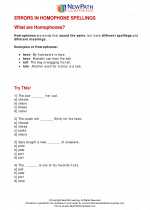
 Activity Lesson
Activity Lesson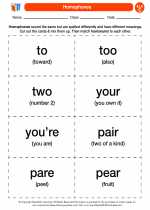
 Worksheet/Answer key
Worksheet/Answer key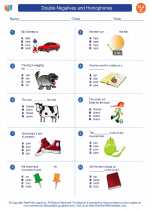
 Worksheet/Answer key
Worksheet/Answer key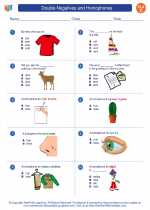
 Worksheet/Answer key
Worksheet/Answer key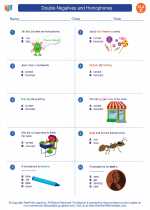
 Worksheet/Answer key
Worksheet/Answer key
